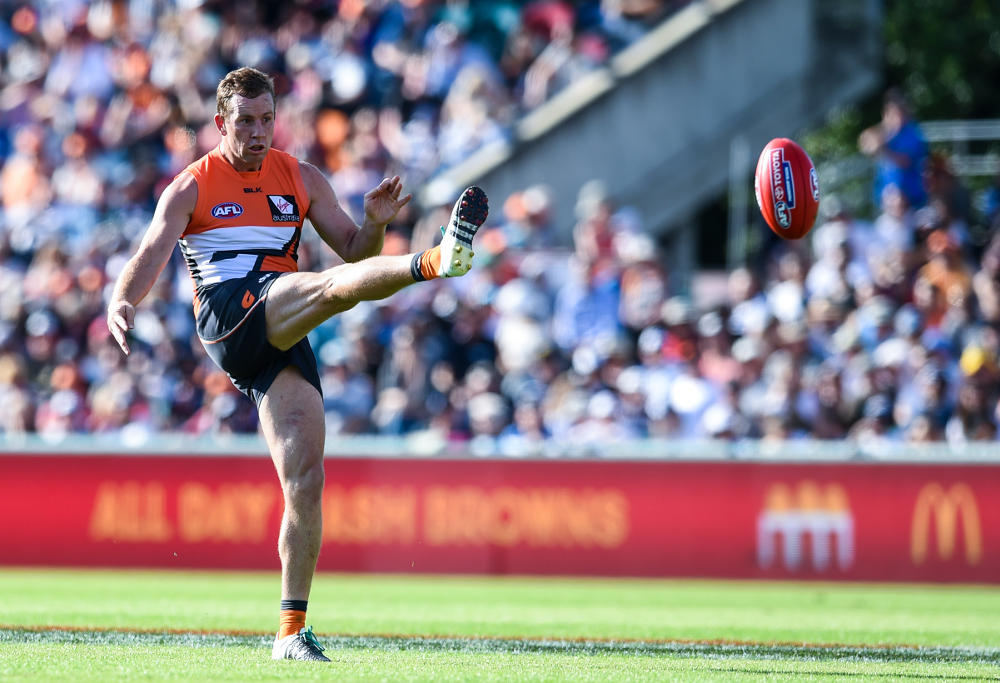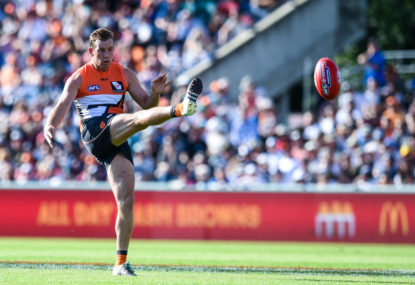When you think of sporting cities in Australia, Canberra is probably not one that comes to mind.
The Australian capital is known more for its museums, public servants and political institutions, rather than sport. As an AFL destination, Canberra is in a strange situation, being an autonomous territory in the middle of rugby heartland in New South Wales. And its major stadium, Manuka Oval, is hardly an iconic venue.
When I first moved to Canberra from Melbourne four years ago, I had the above assumptions, and wondered what sporting life in Canberra would be like. I quickly discovered that Canberra’s AFL culture is developing in leaps and bounds.
GWS’ prescient decision to play three home games a year at Manuka Oval, the advent of the AFLW and the development of first-class sporting culture in Canberra in general, make Canberra a viable AFL growth destination going forward.
One of the biggest factors here is the make-up of Canberra’s population. Most of Canberra’s residents have moved to the city for work, bringing with them different sporting cultures and views. Canberra is partly a rugby town, with both an NRL and rugby union team, but AFL is equally as followed, with the city’s large number of Melbourne expats driving an expanding AFL industry.
This bodes well for AFL head office in its attempts to grow the game. It’s become evident over the past few years that sports which have tried to expand outside the major sporting cities have struggled to find a foothold in the environment – Gold Coast Titans and Suns are two that come to mind. Canberra’s willingness and desire to embrace footy makes it ripe for investment.

(AAP Image/Lukas Coch)
In Manuka Oval, Canberra has what we might term a ‘boutique’ stadium, with a maximum capacity of around 15,000-17,000 people. At capacity, the atmosphere is as good as any AFL ground in Australia.
What sets Canberra crowds apart is the diversity of allegiances, as evidenced by last weekend’s GWS vs Melbourne game. While large portions of the crowd supported one of those two teams, many others (myself included) attended as neutral fans.
This makes for a collegial atmosphere of fans brought together by their love of footy, rather than support for a particular team.
GWS’ decision to play three of its home games each year at Manuka Oval has proved a masterstroke. The Giants played their first game in Canberra in 2012, and have a ten-year deal to play three games in the ACT each year.
Not only has it brought the club more members thanks to its three-game Canberra memberships, it has put AFL front and centre of the sporting landscape in Canberra. It helps that GWS is performing well. In the first few years of its Canberra deal, the Giants were thrashed by their opponents, but their good form over the past two years has given them a solid base of Canberra supporters.
Fixturing has been a big factor in AFL’s expansion in Canberra as well. This year, GWS hosted matches against Port Adelaide, Western Bulldogs and Melbourne, three clubs vying for a spot in the top eight. The game against the Bulldogs was Manuka’s first ever night game and first played in a prime-time slot on Friday evening.
While playing football in Canberra in winter is certainly a chilly experience, the atmosphere around the stadium was electric, and the growing rivalry between the two teams is certainly something Canberra fans have bought into. For footy to continue to grow in Canberra, the AFL should ensure it continues to schedule high-performing teams and more marquee games.

(AAP Image/Mick Tsikas)
At a grassroots level, the game has also gone from strength to strength. AFL Canberra figures from earlier this year show that junior participation rates in Canberra are at their highest level for 30 years, with 125 junior teams involved in the competition this year.
In total, the number participants from across the ACT and NSW has reached 237,549, an increase of 10.4 per cent from 2015 numbers. This has largely been driven by a 23 per cent increase in women’s participation numbers.
The main issue facing AFL expansion in Canberra is the future of Manuka Oval as a sporting precinct. Cricket Australia noted that one of the main impediments to Manuka Oval hosting a Test match was the ground’s relative sub-standard facilities, including change rooms and broadcast booths.
With an eye to this, in 2016 GWS and construction company Grocon presented the ACT Government with an $800-million plan to redevelop the precinct, which would include new apartments, a hotel and retail stores.
Earlier this year, the ACT Government pushed back on this plan, noting that it was unrealistic in scope for a small city such as Canberra. While it has acknowledged the need for some redevelopment to make the stadium into a first-class venue, it has stated its desire that any such works be led by the Government, rather than GWS (who, for its part, has noted its desire to remain involved in the development).
The AFL has shown it is eager to expand the game into new areas, and in Canberra, it has a ready and willing audience, and all the ingredients to develop a new football heartland.































































































